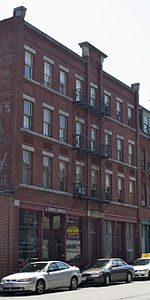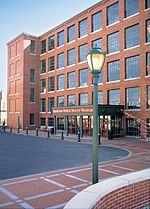Lowell station
1983 establishments in MassachusettsBuildings and structures in Lowell, MassachusettsBus stations in Middlesex County, MassachusettsFormer Boston and Maine Railroad stationsFormer Old Colony Railroad stations ... and 4 more
MBTA Commuter Rail stations in Middlesex County, MassachusettsPages with no open date in Infobox stationRailway stations in the United States opened in 1983Transportation in Lowell, Massachusetts

Lowell station, officially the Charles A. Gallagher Transit Terminal, is an intermodal transit station in Lowell, Massachusetts. It is located off Thorndike Street (Route 3A) near the end of the Lowell Connector south of downtown Lowell. The station is the northern terminal of the MBTA Commuter Rail Lowell Line, with three garages for park and ride purposes. The Robert B. Kennedy Bus Transfer Center is the hub for Lowell Regional Transit Authority local bus service. The station complex is accessible, with elevators connecting the station building to the rail platform.
Excerpt from the Wikipedia article Lowell station (License: CC BY-SA 3.0, Authors, Images).Lowell station
Thorndike Street, Lowell The Acre
Geographical coordinates (GPS) Address Nearby Places Show on map
Geographical coordinates (GPS)
| Latitude | Longitude |
|---|---|
| N 42.6366 ° | E -71.3148 ° |
Address
Charles A. Gallagher Transit Terminal
Thorndike Street
01825 Lowell, The Acre
Massachusetts, United States
Open on Google Maps










